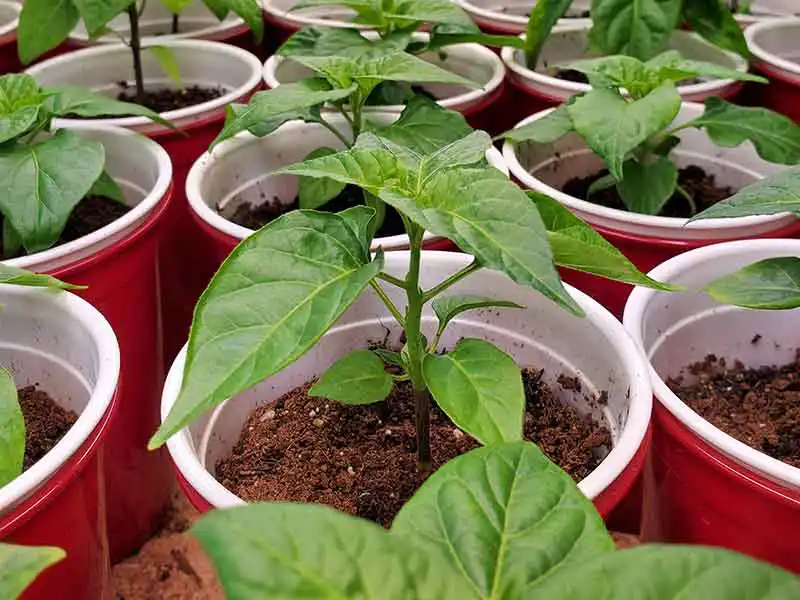Gardening
Perfect Timing: Know When to Transplant Your Pepper Seedlings
Transplanting pepper seedlings is an exciting step in the journey of growing your own delicious peppers. However, it’s important to know when the right time is to transplant them for optimal growth and success. One crucial factor to consider is the height of your pepper plants.
Pepper seedlings should generally be a certain height before you consider transplanting them into their permanent location. This height can vary depending on the specific type of pepper plant and the growing conditions, but there are some general guidelines to follow.
Typically, pepper seedlings should be around 6 to 8 inches tall before transplanting. This height ensures that the plants have developed a strong root system and are sturdy enough to withstand the transplant process. It also indicates that the plants are mature enough to thrive in their new environment.
It’s important to note that the height of the pepper seedlings is not the only factor to consider when deciding when to transplant.
You should also consider the weather conditions and the overall health of the plants. Transplanting should be done when the risk of frost has passed and the soil temperature is consistently warm.
Here are some additional tips to help you determine the right time to transplant your pepper plants:
1. Check the Leaves
Inspect the leaves of your pepper seedlings. They should be a healthy green color and free from any signs of disease or stress. If the leaves are yellowing or showing other signs of distress, it may be best to wait before transplanting.
2. Examine the Roots
Gently remove one of the seedlings from its container and examine the roots. They should be well-developed and filling the container. If the roots are still small and not yet filling the container, it’s a sign that the plant needs more time to grow before transplanting.
3. Consider the Outdoor Conditions
Take into account the current and forecasted outdoor conditions. If there is still a risk of frost or if the temperatures are consistently low, it’s best to wait before transplanting. Pepper plants thrive in warm weather, so make sure the conditions are favorable for their growth.
4. Gradually Harden Off the Plants
Before transplanting, it’s important to gradually expose your pepper seedlings to full sun and outdoor conditions. This process, known as hardening off, helps the plants adjust to the changes in temperature, sunlight, and wind.
Start by placing the plants outdoors for a few hours each day and gradually increase the amount of full sunlight they receive over the course of a week or two.
5. Prepare the Transplanting Site
Prior to transplanting, prepare the site where your pepper plants will be relocated. Ensure that the soil is well-drained and enriched with organic matter. Choose a sunny location that receives at least 6 to 8 hours of sunlight daily.
By following these guidelines and considering the height, overall health, and outdoor conditions, you can determine the right time to transplant your pepper plants. Remember, patience is key when it comes to ensuring the success of your pepper plants. Happy transplanting!






